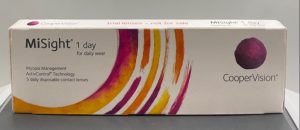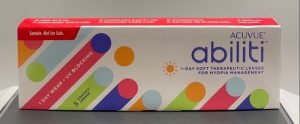Short/Near-Sightedness/Myopia
Myopia is an epidemic worldwide with increasing rates and earlier age of onset.
Progressive myopia, especially if onset is at an earlier age, puts one at risk of high myopia and its associated complications, such a retinal tears and detachment, myopic maculopathy, glaucoma and cataracts.
The aim of myopia control is to prevent high myopia and its associated complications. Each child is different and has different rates of myopia progression. Treatment should be individualised based on the risk of each child.
Lifestyle modifications such as spending more time outdoors and reducing unnecessary near work (i.e. use of handheld devices) are important. Remember the 20/20/2 rule: after every 20 mins of near work, take a 20 second break and spend 2 hours of time outdoors per day.
If lifestyle modifications alone do not help, there are other optical and pharmacological methods to help your child.
Atropine eye drops have been found to be effective in reducing the rate of progression of myopia, by around 60 per cent over a two-year period. However, not everyone is suitable and it may not work for all children.
Atropine eye drops

- Results showed that over a 2-year period, average increase in myopia in children on atropine was 25 degrees compared to 125 degrees in those not using atropine
- Atropine eye drops generally slows progression by 60%
- Latest research shown that low dose atropine has minimal side effects but comparable efficacy and less rebound
- Conclusion is the use of atropine in the short term is safe and can reduce myopia progression
- Atropine eye drops is to be administered every night
- May need to be used for 2 years or more
- Possible side effects:
- Glare in bright sunlight.
- Photochromatic lenses or sunglasses may need to be used
- Blurring of near vision.
- Progressive glasses or bifocals may need to be worn to help with near vision
- Above side effects common with 1% atropine; with lower concentration of atropine, pupil dilation and blurring of near vision almost always negligible
- Systemic side effects such as flushed face, fever, rapid heart rate, dry mouth and skin, constipation, drowsiness, occurs mostly in infants and toddlers, and not been reported in myopic children treated with atropine in Singapore.
- Side effects are temporary and will disappear sometime after stopping the eyedrops
- Possible long-term effects not known or reported, but increased light exposure on the lens and retina may lead to premature cataracts, retinal dysfunction or macular degeneration.
Myopia soft daily disposable contact lenses
Multifocal contact lenses have also been found to be effective in reducing the rate of progression of myopia. Currently there are two brands of myopia control soft contact lenses available – MiSight 1 day and Abiliti 1 day. These soft disposable contact lenses have been clinically tested and found to slow myopia and axial length growth in children.

MiSight 1 day is a dual-focused soft lens which allows the user to see clearly while inducing myopic defocus, in which the image is focused in front of the retina to help slow eyeball growth, and with it, the degree of myopia.

Abiliti 1 day utilizes RingBoost technology to break the interdependence between vision quality and myopia treatment power. The user will still be able to maintain visual quality while reducing the progression of myopia.
When using contact lens, parents must first ascertain that their child is mature enough and ready. Improper use of contact lenses can cause serious complications that may cause permanent vision loss. Children using contact lenses must be properly fitted by a certified eye-care practitioner, carefully monitored, and followed up by an ophthalmologist, and patients are required to undergo regular follow-ups for the treatment to be successful.
Myopia control spectacle lenses
For children who are not comfortable with eye drops or contact lenses, myopia control spectacle lenses can help to control myopia progression.

The most effective lens designs, which utilizes DIMS technology (HOYA), and H.A.L.T technology (Essilor) are clinically tested and found to slow the progression of myopia by 60%. There is also evidence that these two technologies slow axial length growth with good adaptation to the lenses.

The importance of using these lenses is full time wear of the spectacles.
If you or your partner have myopia, has a child whose sibling has myopia or was born premature, your child is at risk of myopia.
Children should have a full eye examination at six months, 18 months, three years and annually subsequently.
Speak to your doctor today about the available treatment options suitable for your child or make an appointment to customize a treatment plan to obtain the best results for your child.
To schedule an appointment or to know more about myopia management for your child, please call 6777 6058. Alternatively please send us an enquiry.
